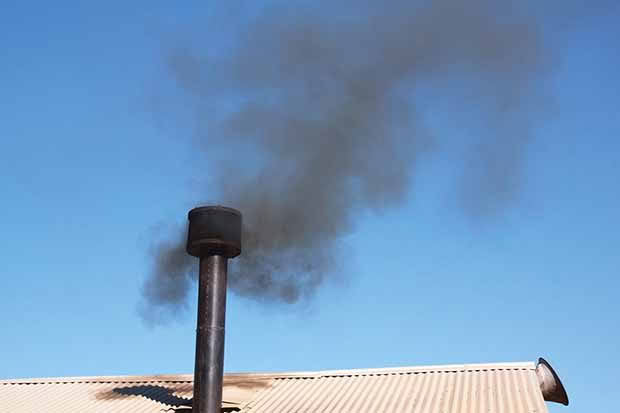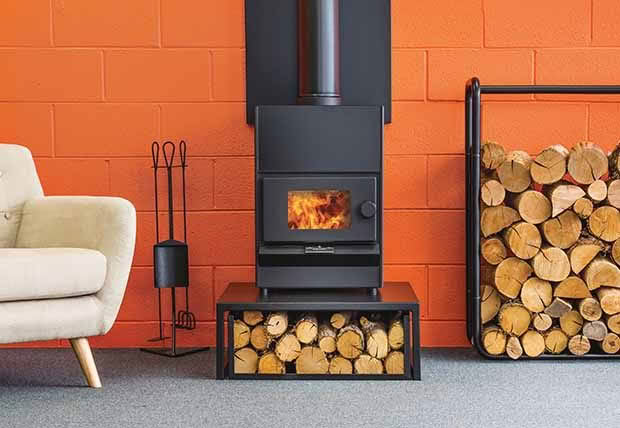Two important things you can learn from a smoking chimney

Words: Nadene Hall
A good wood-burning fire will produce very little or no smoke if you are using well-cured wood and building a fire correctly. Smoke is unburned wood particles – if you can see smoke from a chimney, you need to improve your technique.
■ If you see a lot of black smoke, it’s a sign you’re burning something toxic.
■ a light colored smoke means your fire isn’t burning efficiently and you need to adjust your air intake.
Burning seasoned, dry wood means you can create a fire that is hotter and more efficient, decrease the amount of wood you need to use, avoid pollution from smoke, and reduce the amount of creosote that can build up in your flue (which means less cleaning is required).
A small, hot fire is the most efficient, burning volatile gases quickly which means better air quality. However, this does mean watching your fire carefully and more frequent loading of firewood.

Try out different loads in your burner, then go outside and check the smoke quality. How your wood burner works will vary depending on its size and the wood you are using. You may need to experiment a little to get the best out of it.
Don’t burn rubbish in a wood burner. It creates pollution, you could damage the interior of your stove and/or flue, and it can create a taint in any food you are cooking.
WHY TODAY’S WOOD BURNERS ARE MORE EFFICIENT AND CHEAP TO RUN
Modern wood burners are far cleaner and greener these days, burning at about 60%+ efficiency compared to old open fireplaces (20% or less). An efficient wood burner will supply heat at around 6-10 cents per kilowatt hour (depending on the price of firewood) compared to the average retail electricity price of around 28.8c/kWh.
IF YOU’RE BUYING A NEW WOOD BURNER, KNOW THE RULES
If you live on a block larger than 2ha (5 acres), you can have any wood burner you like. If your block is under 2ha, you need to install one that complies with emission and efficiency standards.
However, if you live in Canterbury and Nelson, their regional councils have more specific rules:
■ Canterbury
■ Nelson
You must have a permit and the work must be done by a specialist installer. The store you buy it from will help you with this.
HOW MUCH FIREWOOD DO YOU NEED
If you use a wood burner each weeknight and day and night at the weekends throughout winter, you can budget on needing approximately 10m³ of firewood each year. The variation depends on your climate, the insulative properties of your home, and the variety and quality of your firewood.
A 1ha plantation can potentially produce several tonnes of firewood, up to 15 tonnes or more per year.
However, if you plan to plant and coppice trees, you will get less because you need to leave a proportion standing for the years ahead.
If you have chosen unproductive farmland to plant your firewood block, tree growth may be slower than average and it will take longer for trees to reach a good size for firewood. The ideal size is logs of about 110mm in diameter or less, once dry.
Love this story? Subscribe now!
 This article first appeared in NZ Lifestyle Block Magazine.
This article first appeared in NZ Lifestyle Block Magazine.
